Bank Swallow (Riparia riparia) photos by Larry Jordan, click on photos for full sized images
The Bank Swallow (Riparia riparia) is North America’s smallest swallow. It can be distinguish from the Northern Rough-winged Swallow by its dark breast band and the white of the throat curling up behind its ear.
The Bank Swallow was listed as a threatened species in California in 1989 by the California Fish and Game Commission and the number of breeding pairs has declined steadily since then.
The main reason for this rapid decline, as in the case of most species, is loss of habitat. In California, much of the Bank Swallow’s nesting habitat in the southern and central areas has been eliminated by flood and erosion-control projects. These projects destroy or alter nesting habitat when banks are sloped to 45° and large rocks (riprap) are placed on the slope.
Historically, all Bank Swallow colonies in North America were found in natural sites such as banks along rivers, streams, lakes, and coasts; today, many colonies are in human-made sites like sand and gravel pits and road cuts.
This colony in Fall River Mills, about an hours drive from my home, is just down river from Fall River Lake and is located on a busy highway.
The two photos above the video and these few that follow are a series I took of one of the birds beginning to dig a burrow.
The bird on the left of the photo is doing the digging. You can see some of the scrape marks in the middle of the frame.
Burrows are dug with the bill, feet, and wings as birds cling to a slight projection on the bank face, and dig using their bill in a rapid, slashing motion and feet in a scratching motion. Dislodged material from inside the burrow is ejected with vigorous kicks and wriggling body and wing shuffling movements1.
You will be able to see some of this digging behavior at the beginning of this video. While excavating burrows you will also see unpaired males performing their “territory circle-flights,” where they fly and sing in small circles around the burrow entrance advertising to unpaired females. The male perches on the burrow ledge displaying his white throat-patch if a female lands near the burrow after his display1.
Once the burrow is excavated, the male performs “invitation flights” as he overtakes flying females and lands at the burrow to entice the female inside.
Some of the birds must have already paired up. As you may have noticed in the video above, some were seen bringing nesting material into the nest burrows.
If you look closely, just to the left of this swallow’s wing, you can see it is carrying a feather in its beak.
Observing these different behaviors I believe these Bank Swallows were in different stages of the nesting process.
This appears to be a male inviting a female to his finished burrow…
standing on his porch singing…
then flying off to perform an “invitation flight?”
Since there is no sexual dimorphism between the male and female Bank Swallow you really can’t tell them apart until they begin incubating eggs, at which point the female will have a brood patch and the male will not.
But it’s fun trying to figure it out by observing their behavior.
Whether you’re looking at a male or female, they certainly are cute.
To see more great bird photos from around the world, make sure to check out Wild Bird Wednesday and The Bird D’pot.
References: 1Birds of North America Online

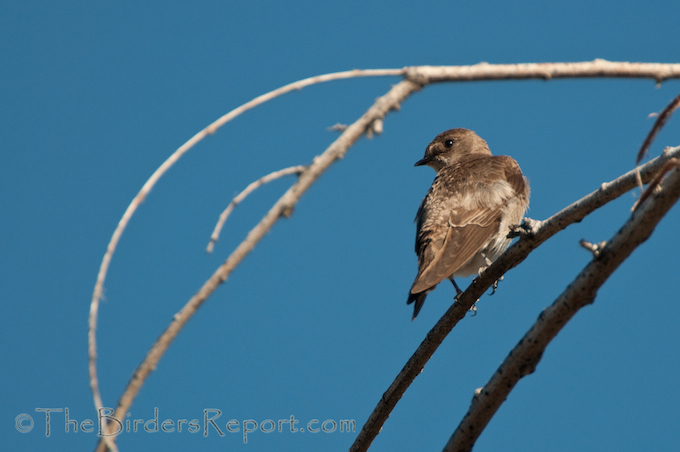
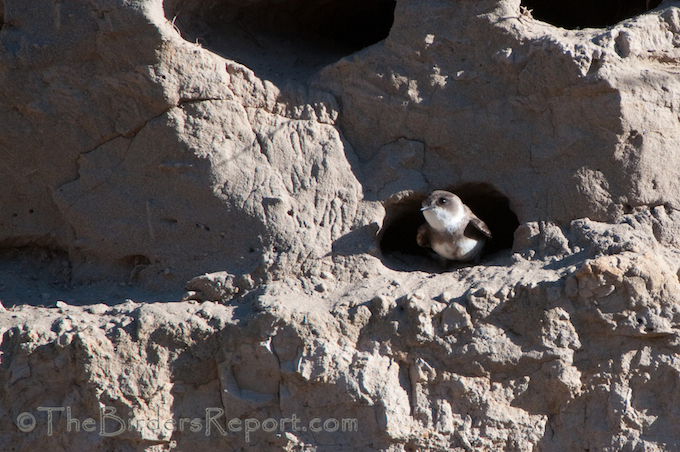
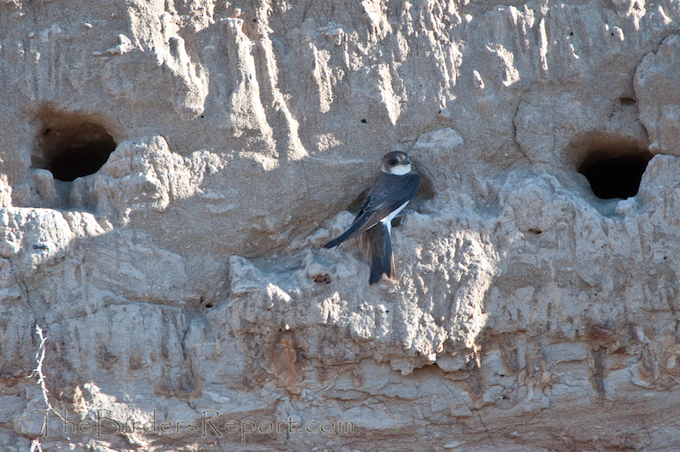
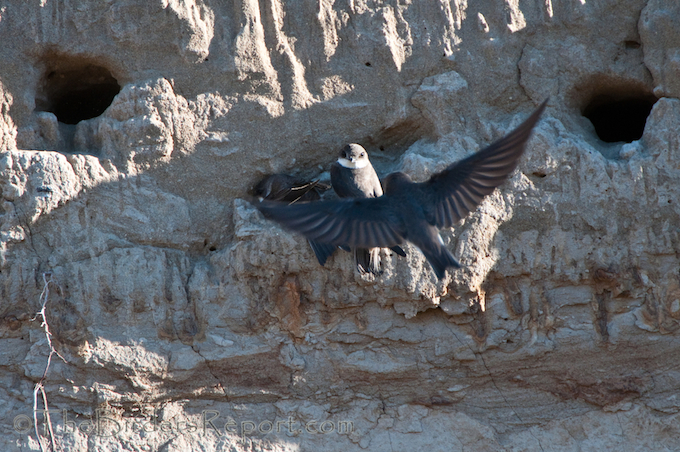
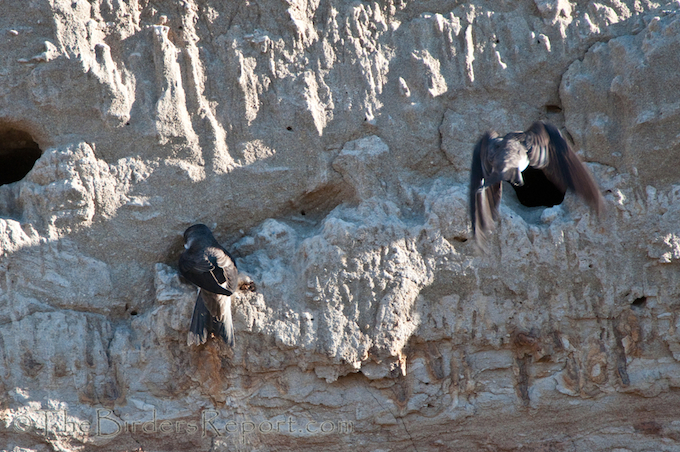
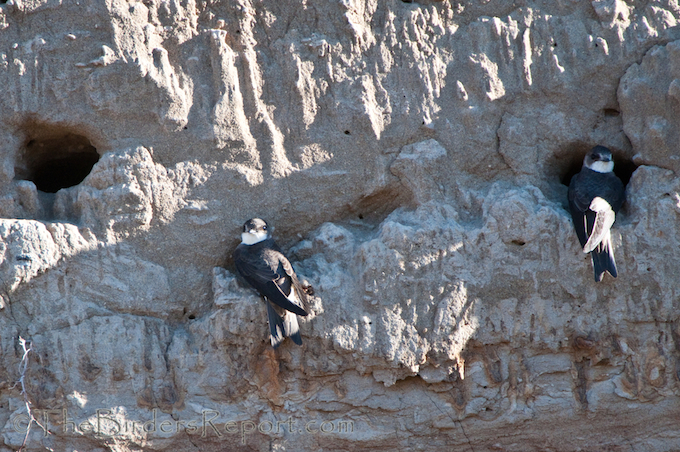
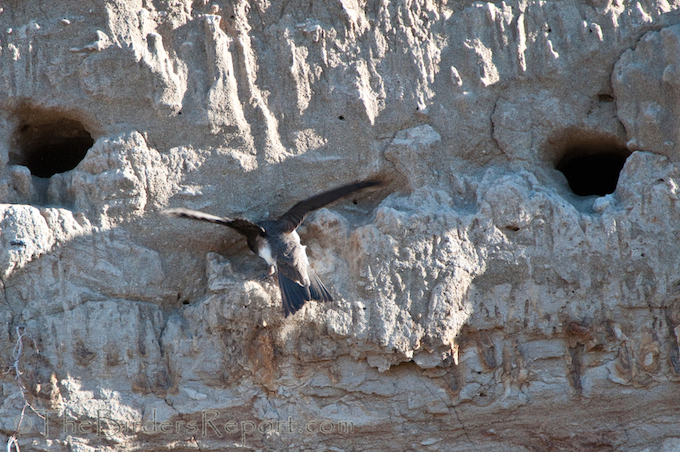
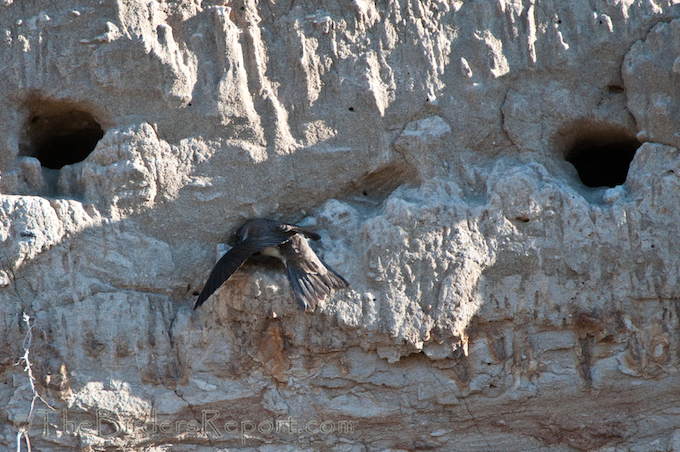
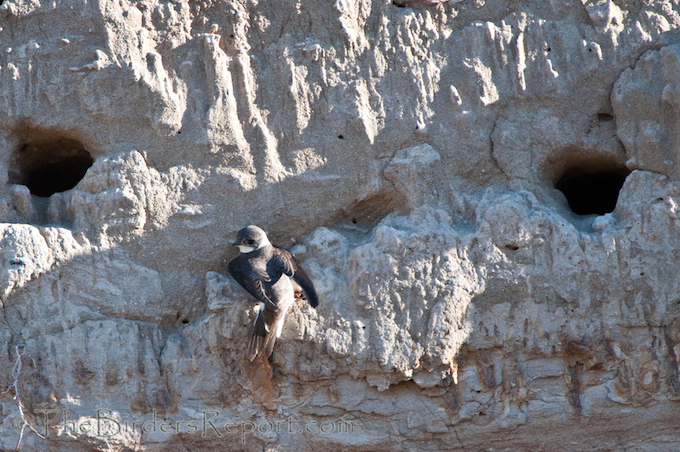
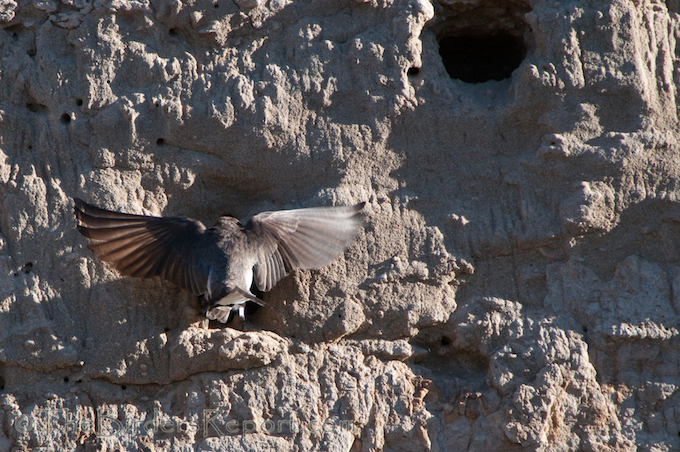
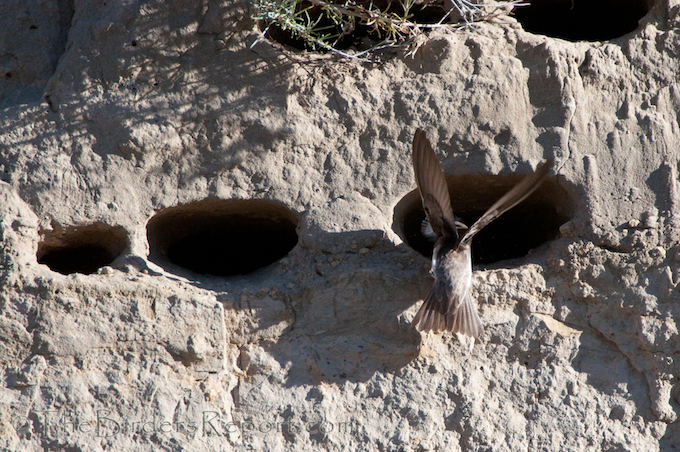
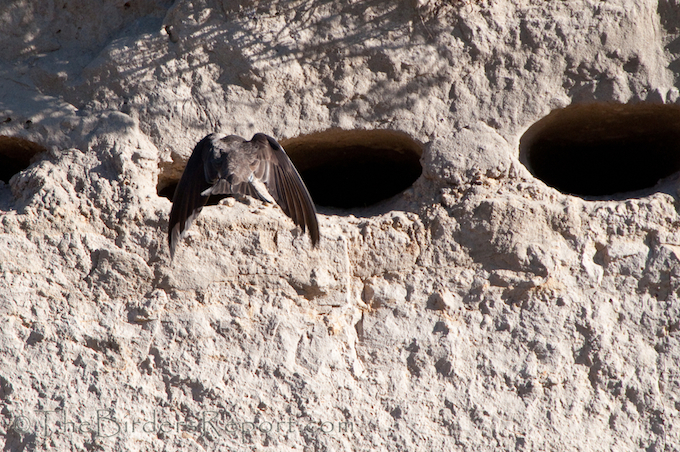
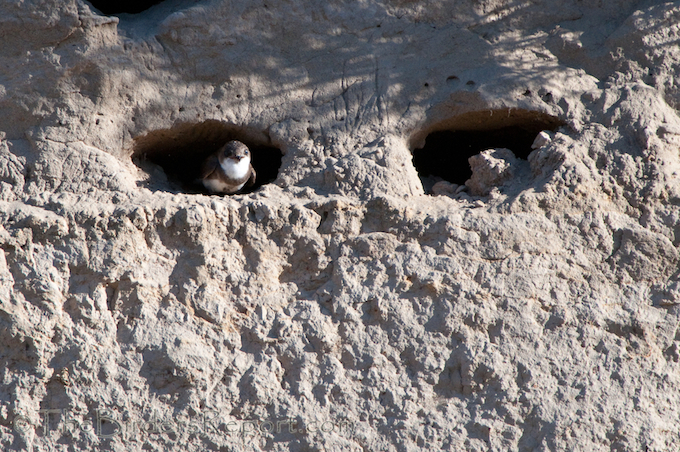

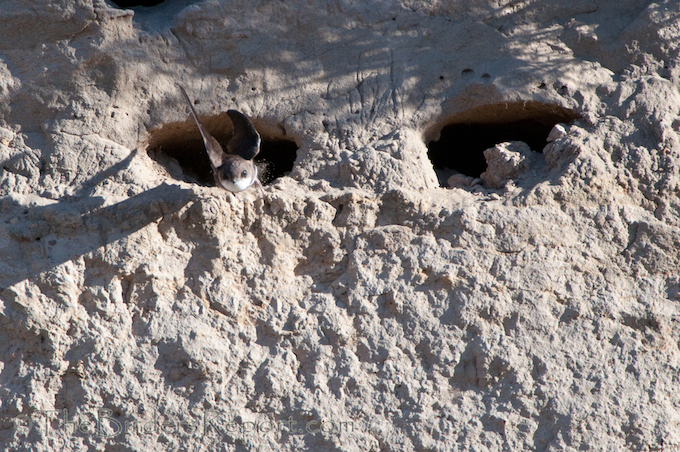
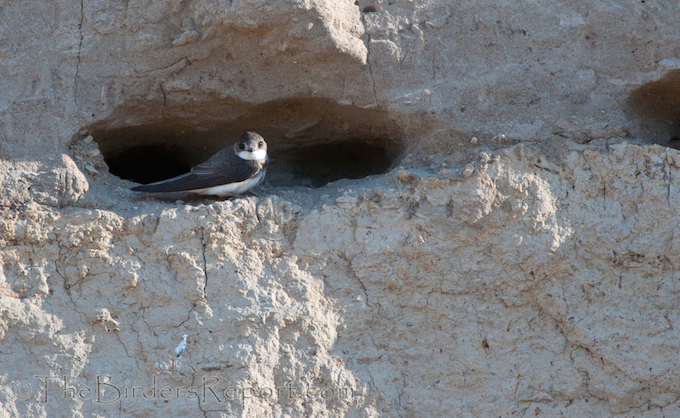
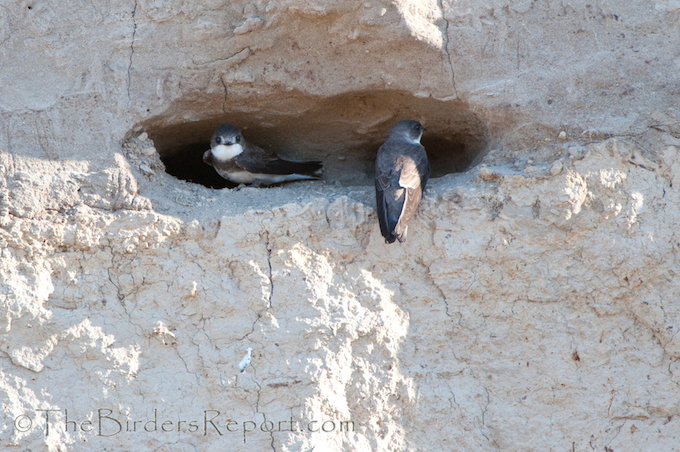
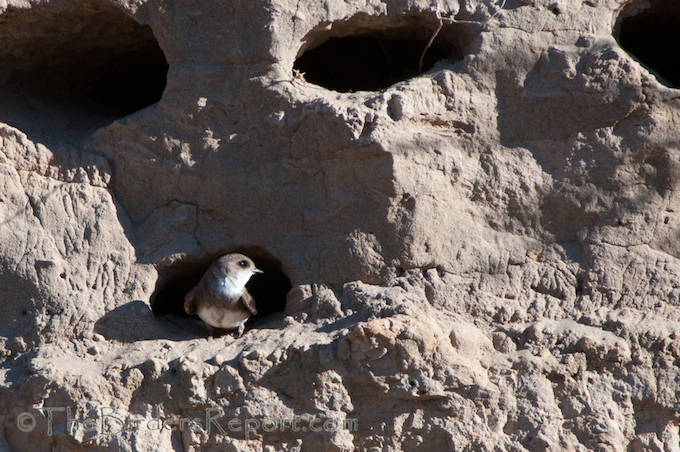








Comments on this entry are closed.
Swallows are some of my favored birds and though I have never seen this species, I can appreciate them…such wonders and your images shares are great~
Nature at its finest here in your images. So impressive, such skilled birds….these, and this post, are amazing.
they are so cute! like their little commune!
Larry, this is great info and documentation! I have seen bank swallows around their burrows but you are making sense of it. Wonderful photos!
wonderful photos of the Bank Swallows Larry; a smorgasbord of swallows!
Wonderful photos of the cute little swallows.
Nice set of pictures – this look like Sand Martins from the UK.
One thing I’d like to see, would be all of the “All Black” oystercatchers put together in one place, and then try to tell them apart!
Stewart M – Melbourne
Cool post on the swallows, Larry! It is neat watching them at the burrows. Awesome photos. Happy birding!
The concept of Bank Swallows is nothing short of miraculous to me … yet another species that so perfectly fills a niche in nature, taking advantage of the special substrates along rivers. They’re like Opposite-Cliff-Swallows — digging instead of building on. 😉
Habitat destruction is such a devastating phenomenon, and when I see it happening in person, it breaks my heart — watching animals get displaced time and again. Do you know if there are efforts to restore some banks for these birds, in the same way islands are built for terns and so forth?
Very interesting series.
Super duper post and pics. I’ve only ever seen Caves once.
Thank you all for your kind comments. I must apologize for not having the time to answer everyone’s questions or visit your blogs to read your wonderful posts. It is bird nesting time and I receive many emails daily with questions about egg and nest identification. Answering emails and monitoring nests takes up much of my time in the Spring and early Summer.
Thank you Ingrid for your unwavering concern for our wildlife and their habitat. There has been a huge effort to restore Bank Swallow habitat and prevent its destruction on the Sacramento River in California by a coalition of groups headed up by the US Fish & Wildlife Service. There is a Power Point presentation you can download here: http://bit.ly/18fTg7b
Our local Chico Audubon Society known as Altacal Audubon is involved in the project as well and they created a brochure and website to inform and help Sacramento River landowners learn about the plight of the Bank Swallow and incentives to help protect them. You can visit their website here: http://www.bankswallows.org/ and download their brochure here: http://www.altacal.org/BANSBrochure_final2010.pdf